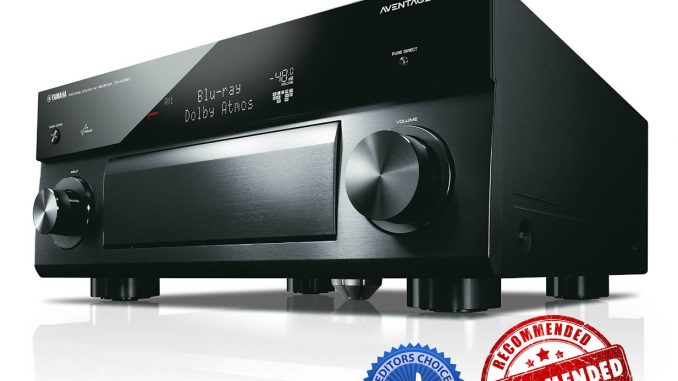
Yamaha released six new AV receivers in the AVENTAGE series earlier this year, including the brand new entry-level RX-A550. However, in this review we check out the powerful top-of-the-line RX-A3050.
Yamaha RX-A3050
-
Sound Quality - 96%96%
-
Features - 90%90%
-
Ease of Use - 90%90%
-
Build Quality - 96%96%
SUMMARY
RX-A3050 is Yamaha’s flagship AV receiver, and its flexibility, performance and power makes it one of the best on the market.
Excellent sound quality.
Plenty of power.
Impressive build quality.
Lots of features
Relatively cheap remote.
On paper you might not notice any significant differences compared to last year’s model, the RX-A3040, but Yamaha has implemented some improvements in important areas, such as support for Immersive Sound (Dolby Atmos, DTS:X), HDCP 2.2, DSD and MusicCast, just to mention a few.
Design & Connectivity
Opening the packaging box was quite straightforward and the same goes for the content of it. Besides the receiver you'll get a remote control (batteries included), YPAO microphone and a small stand, FM and AM antennas, power cable, an Easy Setup Guide and Safety brochure, and the 193 page Owner's Manual on a CD-ROM. The full-size plastic remote control gets the job done, but it would have been nice with a brushed aluminum remote to compliment the looks of the amp and reflect the fact that this is a top-of-the-line $2000 AV receiver.
With a dimension of 17-1/8” x 7-1/2” x 18-5/8” (435 x 192 x 474 mm), you can tell that the RX-A3050 is a high-end AV receiver just by looking at it. The rather hefty size is of course accompanied by an equally hefty weight of 39.9 lbs (18.1 kg), which made it somewhat difficult to place on the shelf of our test room AV rack - but once in place, it will stay in place.
The front panel is split in an upper and lower half, where the lower half is made of brushed aluminum and the upper half is covered by plastic, covering the display area. The lower half has a big flap in the center, with two large control knobs on either side - input selector on the left and volume control on the right - and the 3050 have a very clean and austere look with the flap closed.
Hiding behind the very smoothly functioning flap you'll find a total of 29 small buttons with various functions, accompanied by a USB-A, YPAO mic input, 6.35 mm headphones output, RCA composite video and audio inputs and a HDMI input.
Apart from the dot-matrix display on the upper half you'll also find a Standby button on the left, and a small Pure Direct button on the right.
The RX-A3050 is built in the same manner as Yamaha's more affordable AV receivers, using a single piece of metal for the top and sides, and it is not until you take a look on the inside that you will appreciate the extra effort Yamaha has put in to the AVENTAGE series.
Poppin' The Hood
When we look inside we realize why the 3050 is big and weighs a lot; it is filled with an impressive amount of electronics while still leaving enough space for cooling. The middle of the front section houses a massive shielded transformer with large heat sinks and output transistors on both the left and right side of it. The rear section houses three levels of printed curcuit boards, as well as two 18.000 µF electrolytic capacitors from Nippon Chemi-Con, and Sanken STD05P and STD05N output transistors, also found on the RX-A3040. A shielded Yamaha N-01 Wi-Fi module is placed separately in the upper parts of the back. The interior of the receiver is also reinforced with a H-shaped cross member frame, making it extra rigid and stable and also reduces vibration in the chassis.
The underside of the receiver has four solid feet placed at each corner, and in the middle is an Anti-Resonance Technology (ART) Wedge, functioning as a fifth foot in the center of the receiver, dampening vibrations from the transformer, transistors and heat sinks, as well as vibrations caused by the speakers.
Digital-to-analog conversion is done by ESS Technology's 192 kHz/32 bit Sabre ES9016 DAC for the main channels, and ES9006 for the presence channels. A Texas Instrument Cinema DSP handles the multi-channel processing and an Analog Devices ADV7181C handles the decoding and conversion of video signals.
While the front may look clean and sober, the exact opposite is happening at the back. There's an abundance of in and outputs:
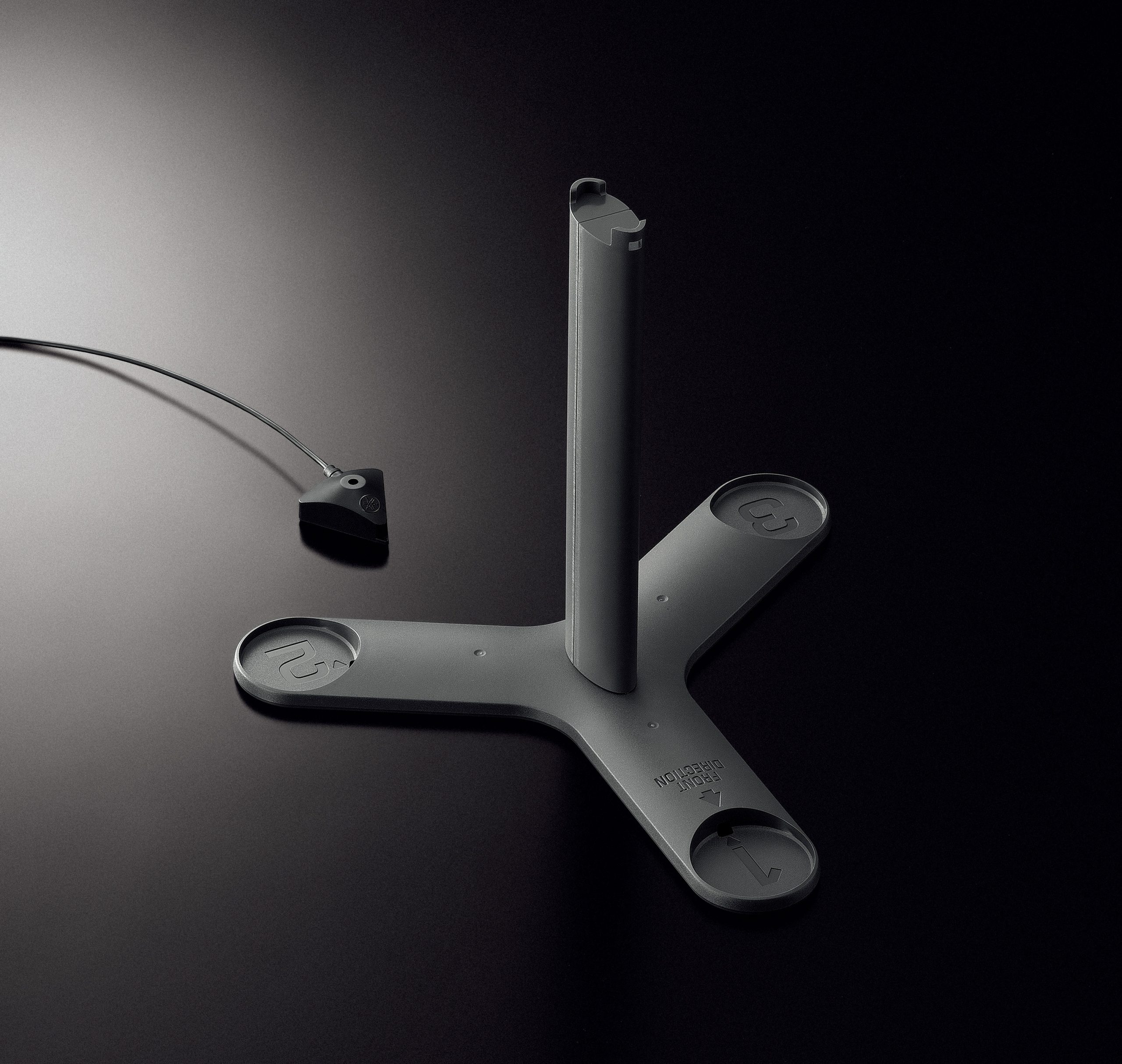
- 7 HDMI Inputs and 2 Outputs (HDCP2.2 & ARC)
- 3 Optical Digital Audio Inputs
- 3 Coaxial Digital Audio Inputs
- 9 Analog Audio Inputs
- Phono Input
- 3 Component Video Inputs and 1 Output
- 4 Composite Video Inputs and 1 Output
- 11.2-channel Pre-Out (for external amplifiers or active speakers)
Additionally, there's an input for a Wi-Fi antenna and an Ethernet port, along with inputs for FM and AM antennas, Trigger Out 1/2, Remote 1/2 and a RS-232C. On the right is a connector for the detachable power cord, and on the bottom you'll find a total of 22 high quality speaker terminals; seven pairs for the main channels and four pairs for the Zone2/3, presence and bi-amping the front speakers.
The Power and The Glory
One of the most impressive things about the RX-A3050 during the time we reviewed it was the unwavering sense of power. Having tested a few lower priced AV receivers recently, we realized that this is what you pay extra for. Not even going all-out with a full 9.2 speaker setup at nausea-inducing volume levels caused the 3050 to falter. It just confidently kept feeding the speakers with stable and unshakeable power, and we cannot imagine any reasonably built and priced speaker that would cause this Yamaha to yield.
No matter what type of speakers we hooked up to the 3050, it revealed a sound that was natural and clean across all frequencies. It handled surround effects with aplomb and certainty, and never failed to convey what happened on the screen with accuracy and precision, and the finer details in the soundscape was rendered faithfully. There is no doubt that the RX-A3050 does an excellent job at converting and processing the signals as the overall sound is cohesive, natural and refined from top to bottom. Also, the support for Immersive Sound formats, like Dolby Atmos and DTS:X, makes sure that the RX-A3050 is future-proof and would be the ideal choice for anyone looking for an awesomely powerful and modern home theater.
Moving on to two-channel music and we reveled in a very musical and detailed reproduction with exemplary authority and control, and we've heard many stereo amplifiers do a worse job than the 3050 for the same money. Paired with good speakers, the soundstage is both wide and deep, with full-bodied and powerful bass, rich and colorful midrange and smooth and detailed treble. We ultimately find it very hard to find any serious flaws as we get more and more enchanted by the musical spells that the RX-A3050 cast.
It's not just great sound that makes the 3050 such a compelling choice for home theater enthusiasts, but also the aforementioned support for Dolby Atmos and DTS:X (will be available via future firmware update), 192/24 and DS128 playback via a network. Add to this Bluetooth, AirPlay and MusicCast for multiroom setup with other compatible Yamaha devices, and the ability to control the receiver using Yamaha's AV Controller App with extended functionality and adaptability to cater for just about any need you may have.
Conclusion
Whether you love movies or music - or why not both - we are certain that the Yamaha RX-A3050 will grant most, if not all, of your needs and wishes. It's easy to set up and use thanks to the excellent YPAO system, but also allows the inclined to adjust and tinker with the many setup options to squeeze the most out of it.
There are of course cheaper options available, but there's a reason why the RX-A3050 is Yamaha's flagship AV receiver, and its flexibility, performance and power makes it one of the best on the market.
GET IT ON eBay!
- FEATURES
- SPecIFICATIONS
- AVENTAGE build standards designed to deliver the highest level of audio performance
- Aluminum front panel, symmetrical amplifier layout, H-shape cross member frame and rigid bottom frame
- MusicCast wireless multiroom audio support
- Bluetooth®, built-in Wi-Fi and Wireless Direct for wireless music streaming
- AirPlay®, Spotify®, Pandora® music streaming service and AV Controller App
- DSD 2.8 MHz / 5.6 MHz, FLAC / WAV / AIFF 192 kHz / 24-bit, Apple® Lossless 96 kHz / 24-bit playback
- YPAO™ - R.S.C. with 3D, multipoint and angle measurement
- Dolby Atmos® and DTS:X™ support (5.1.4-ch, 7.1.2-ch or 7.1.4-ch with an external 2-ch amplifier)
- CINEMA DSP HD3 expands the sound field vertically for more thrilling and realistic surround sound
- Professional digital-to-analog conversion (ESS SABRE™ Ultra DAC ES9016S and ESS Premiere DAC ES9006A)
- Advanced HDMI® zone switching (Zone 2)
- Zone GUI and Party Mode
- HDMI 2.0a: 4K Ultra HD Full Support with 4K60p, HDCP2.2, HDR* Video and BT.2020 pass-through

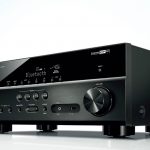
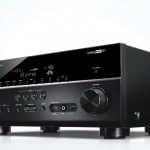
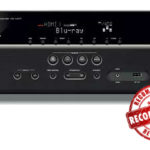
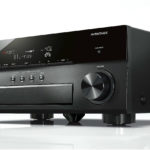
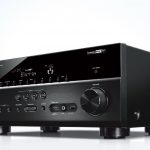
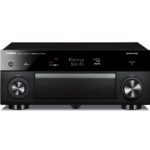
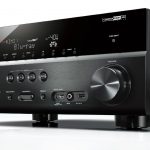
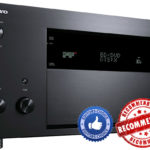
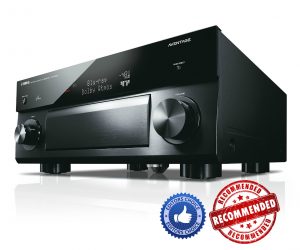


Please tell me if I can connect a cassette deck to this amplifier and how. For your attention, thanks.
Yes, you can. It has eight analog inputs (stereo RCA/phono) in the back and one in the front.